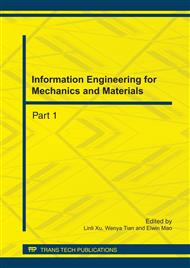p.783
p.788
p.792
p.797
p.807
p.812
p.816
p.820
p.825
Finite Element Calculation about Stress Concentration Coefficient of Welded Butt Joints Based on the ABAQUS
Abstract:
Stress concentration coefficient of welded joints has a crucial influence on mechanical properties of welded structures. Geometrical parameters of welded joints seriously affect the stress concentration coefficient. In order to increase the mechanical properties and using safety of welded structures, it has great significance for reducing stress concentration coefficient and improving the mechanical properties of welded structures by researching and improving the geometry of welded joints . In this paper, the effect of weld toe inclination angle θ and weld edge transition arc radius r on the stress concentration coefficient of welded butt joints were analyzed by using ABAQUS finite element program, and the change rule of stress concentration coefficient with the variation of the two parameters was also researched. The calculation results indicate that reducing weld toe inclination angle or increasing transition arc radius can effectively decrease the stress concentration coefficient of welded butt joints, so as to improve the mechanical properties of welded structures. For the safe use of welded structures, the true weld edge transition arc radius r should be greater than 3mm, and weld toe inclination angle θ should be smaller than 30°.
Info:
Periodical:
Pages:
807-811
Citation:
Online since:
July 2011
Authors:
Price:
Сopyright:
© 2011 Trans Tech Publications Ltd. All Rights Reserved
Share:
Citation:


